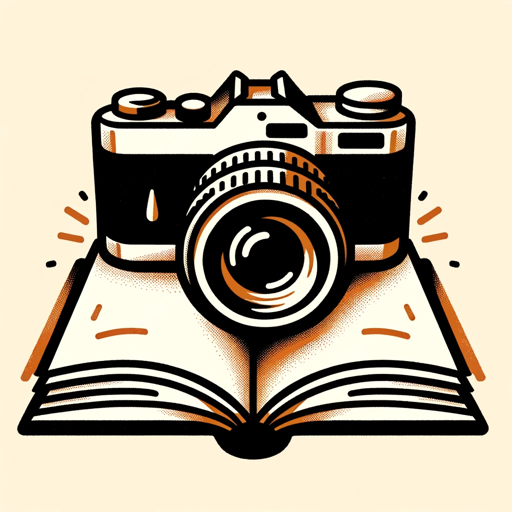Image to text (image2text)-AI-powered text extraction
AI-powered image to text conversion
What can I do?
Related Tools
Load More
Image to Text to Image
Analyzes photos, describes them, and generates new images.

Image to Text Extractor
Assists in extracting text from images into formatted and unformatted text.

From image to text 📷💬
Turning images into text - It's Like Magic! 🌟

Extract Text from Image
Upload an image (gif, jpg, png) and extract the text.
Text from image
Text from Image is a streamlined tool designed to extract text from image files. It simplifies the process to copy text from image sources, providing a fast and accurate solution for users needing to extract text from image documents for various applicati

image to text
Image to Text is an advanced image to text converter, adept at transforming images into accurate text. This tool excels in converting diverse visuals to readable text. It embodies the innovative text to image AI technology, bridging the gap between visual
20.0 / 5 (200 votes)
Introduction to Image to text (image2text)
Image to text (image2text) is an advanced AI-powered tool designed to recognize and extract text from images. This functionality is particularly useful for converting non-editable text, such as that found in photographs, screenshots, and scanned documents, into a digital, editable format. The primary purpose of image2text is to enhance productivity and accessibility by enabling users to quickly transform visual information into text for further use, editing, or analysis. For example, a student can take a picture of a textbook page and use image2text to convert it into editable text for notes. Another scenario is a business professional capturing meeting notes on a whiteboard and using the tool to digitize those notes for sharing and archiving.

Main Functions of Image to text (image2text)
Text Recognition and Extraction
Example
Extracting text from a photographed book page.
Scenario
A student needs to quote several lines from a library book that cannot be borrowed. By taking a photo of the page and using image2text, the student can easily convert the image to text, enabling them to copy and paste the required quotes into their essay.
Document Digitization
Example
Converting a scanned contract into an editable Word document.
Scenario
A lawyer receives a scanned copy of a contract that requires edits. Instead of manually typing out the entire document, they use image2text to extract the text, making it easy to edit and update the contract digitally.
Data Entry Automation
Example
Extracting and organizing information from a business card collection.
Scenario
A sales professional collects numerous business cards at a conference. Using image2text, they can quickly extract the contact details from each card and compile them into a spreadsheet, streamlining the data entry process and saving time.
Ideal Users of Image to text (image2text) Services
Students and Educators
Students and educators frequently encounter situations where converting printed or handwritten text into digital form is necessary. Whether it's for creating notes, quoting texts for research, or digitizing lecture materials, image2text provides a convenient and efficient solution.
Business Professionals
Business professionals, including lawyers, marketers, and salespeople, often need to convert physical documents, notes, and business cards into digital formats for editing, sharing, and archiving. Image2text streamlines these processes, enhancing productivity and accuracy.

Guidelines for Using Image to Text (image2text)
1
Visit aichatonline.org for a free trial without login, also no need for ChatGPT Plus.
2
Upload or provide a link to the image you want to convert to text.
3
Specify any preferences for text extraction, such as language or text format.
4
Click the 'Convert' button to process the image.
5
Review and download the extracted text for your use.
Try other advanced and practical GPTs
TranslatePDF
Seamless AI-powered PDF translations.

Assistant
AI-powered efficiency for your tasks
Chef Gourmet
Discover Global Flavors with AI Precision

Nursing Care Plan Developer
AI-driven personalized nursing care plans

Fiver Gig Generator
AI-powered Fiverr Gig Generator
Hold my drink...
AI-powered insights, redefined.

Software Engineer Resume Coach
Optimize Your Software Engineering Resume with AI.

CISSP Buddy
AI-powered CISSP Exam Prep

R Data Analysis
AI-powered data analysis with R.

GameAppGPT
Your AI partner for smarter development.

AI Ally
AI Ally: Your Smart Learning Partner

Doodle Delight 🎨️
AI-powered charming doodle creations

- Research
- Translation
- Content
- Documents
- Notes
Frequently Asked Questions about Image to Text (image2text)
How accurate is the text extraction from images?
The accuracy of text extraction depends on the clarity of the image and the text quality. Generally, the tool uses advanced OCR (Optical Character Recognition) technology to ensure high accuracy.
Can I extract text from handwritten notes?
Yes, the tool can extract text from handwritten notes, though the accuracy may vary based on the legibility of the handwriting.
What image formats are supported?
The tool supports various image formats including JPEG, PNG, BMP, and GIF.
Is there a limit to the number of images I can process?
For free users, there might be a limit on the number of images processed per day. Subscribing to a premium plan can remove these limits.
How secure is the text extraction process?
The tool ensures the security and privacy of your data by using encrypted connections and not storing your images after processing.